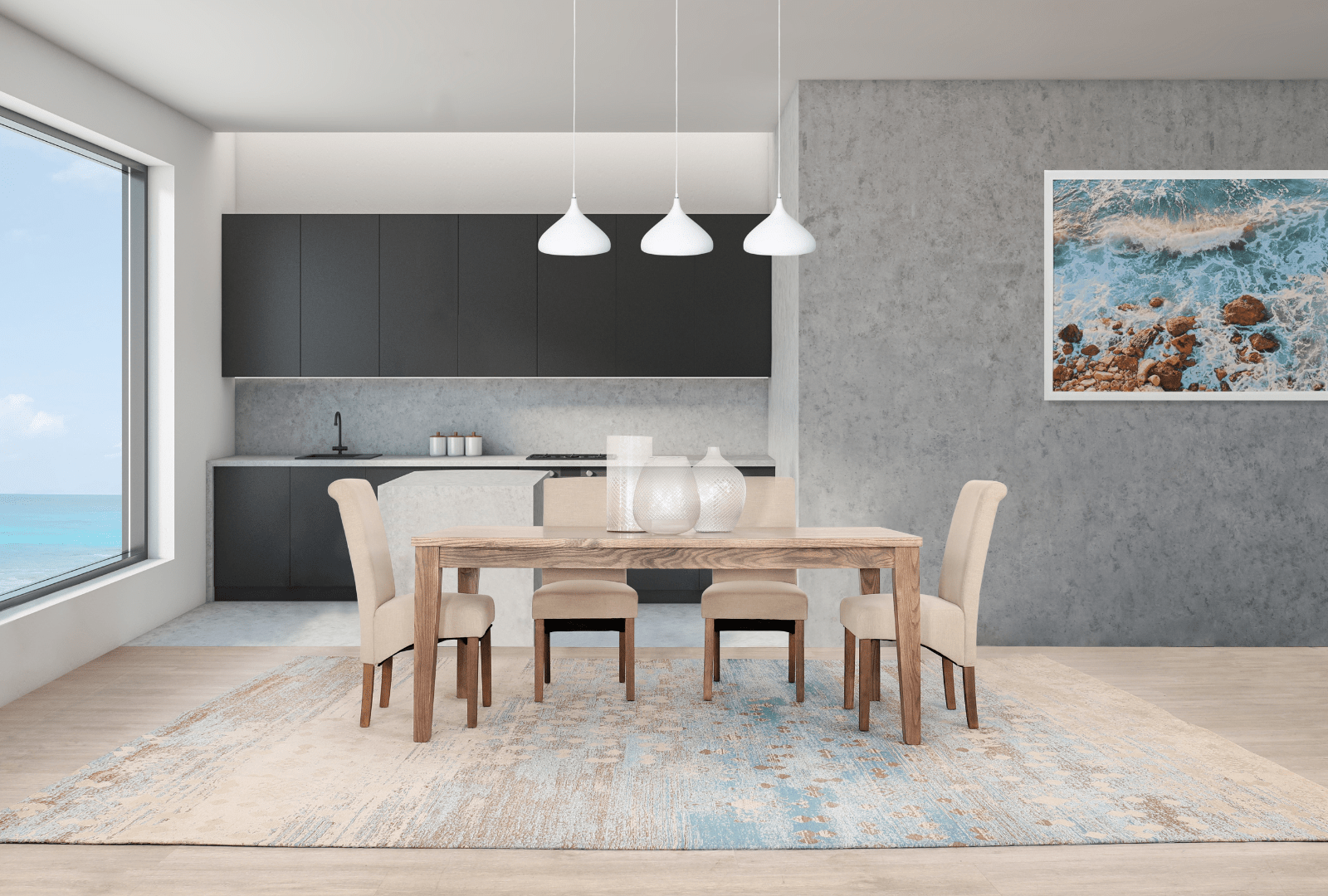Couches
Living
Decor
Tips for Arranging Furniture in an Open-Concept Living Space
July 25, 2023 4 min read

Welcome to our home, where walls disappear and space invites a sense of freedom and togetherness. An open-concept living space is a modern architectural marvel that effortlessly combines living, dining, and kitchen areas into one cohesive oasis of comfort. But with all this open space comes the challenge of arranging furniture in a way that maximizes functionality and enhances the overall ambience. Fear not, for we have curated some valuable tips to help you create the perfect arrangement that fosters both harmony and style.
1. Define Zones with Furniture Groupings
In the absence of walls, furniture becomes the defining element that separates distinct areas within an open-concept space. Start by grouping furniture pieces to create functional zones. For example, position your sofa, coffee table, and entertainment centre to form the cosy living area, while a dining table with chairs delineates the eating space. This way, you'll prevent the room from feeling like a jumbled mess and provide a sense of purpose to each area.
2. Flow with Traffic Patterns
Imagine your space as a river with a natural flow of movement. Arrange your furniture to facilitate easy navigation through the space. Avoid placing large pieces in high-traffic areas to prevent obstruction and allow smooth movement from one zone to another. Instead, position sofas and chairs in a semi-circle or L-shape to encourage conversation while maintaining accessibility.
3. Create Balance with Symmetry
Achieving visual balance in an open-concept space can be a bit tricky. To strike the right chord, use symmetrical arrangements whenever possible. Placing identical furniture pieces on either side of a central point can establish equilibrium and create a harmonious atmosphere. For instance, two matching armchairs flanking a console table or a fireplace can work wonders in achieving this effect.
4. Let Your Furniture Float
In an open-plan living area, you don't need to keep furniture against the walls. Embrace the freedom to let your furniture "float" within the space. Pulling furniture away from the walls adds depth and creates a cosy, intimate feel. For example, positioning the sofa in the middle of the room with a console table behind it can effectively delineate the living area while providing extra storage and display space.
5. Utilize Area Rugs as Anchors
Rugs are magic carpets that help anchor furniture groupings and define zones in an open-concept space. A well-placed rug under the dining table or beneath the coffee table can visually tie the furniture together, while also adding warmth and texture to the room. Remember to choose the right size of the rug so that all the furniture in the grouping can rest on it.
6. Consider Multi-Functional Furniture
Maximize the utility of your space with multi-functional furniture pieces. Opt for a dining table that can extend to accommodate more guests, or a coffee table with hidden storage to keep your living area clutter-free. These versatile additions can streamline your open-concept living while offering practicality and convenience.

7. Light Up the Space
Proper lighting is vital for an open-concept living space to feel inviting and cosy. Incorporate a mix of lighting options, such as overhead fixtures, floor lamps, and table lamps, to create layers of illumination. Dimmer switches can also be a valuable addition, allowing you to set the mood for different occasions.
8. Incorporate Versatile Room Dividers
While the charm of an open-concept living space lies in its seamless flow, there might be instances where you desire a bit of privacy or visual separation without compromising on the openness. In such cases, consider using versatile room dividers. Sliding doors, folding screens, or even bookshelves strategically placed between different zones can create subtle partitions. These dividers offer the flexibility to open up the space when needed or close off specific areas for a more intimate atmosphere.
9. Showcase Your Personality
Don't forget to infuse your unique personality and style into the arrangement. Decorate with artwork, family photos, and decorative accents that reflect your taste and create a personal connection to the space. Introducing plants and greenery can also breathe life into the room, adding a touch of nature's charm.
10. Test Out Different Layouts
Arranging furniture in an open-concept living space is not a one-size-fits-all approach. Feel free to experiment with various layouts until you find the one that best suits your needs. Utilize online room planning tools or sketch your ideas on paper before committing to a particular arrangement. Trying out different configurations will help you visualize how the space will look and function, allowing you to make informed decisions before physically moving the furniture.
With these valuable tips in your toolkit, you can confidently embrace the open-concept living space and transform it into a harmonious and stylish oasis of comfort. Define functional zones with furniture groupings, go with the flow of traffic patterns, create balance with symmetry, and let your furniture float for a cosy and inviting atmosphere. Utilize area rugs as anchors, opt for multi-functional furniture, and play with lighting to set the mood. Incorporate versatile room dividers when needed and infuse your personality and style into the arrangement with décor that speaks to you. Finally, don't be afraid to test out different layouts until you find the perfect arrangement that maximizes functionality and enhances the overall ambience. Your open-concept living space will become a reflection of your unique taste and a place where togetherness and freedom coexist seamlessly.




